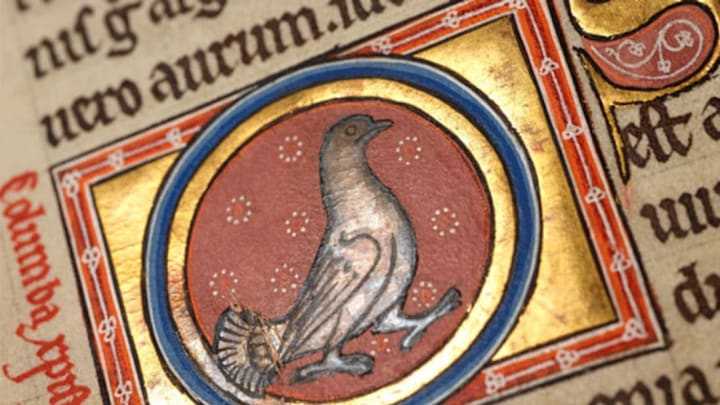For nearly four centuries, the University of Aberdeen has housed one of the best-preserved medieval illuminated manuscripts in existence. The Aberdeen Bestiary depicts birds, bats, and other colorful creatures painted against backgrounds of brilliant gold leaf. Having once belonged to King Henry VIII, it was long believed that the book was published exclusively for the wealthy elite. Details revealed by high-definition digitization suggest that the manuscript was instead created as a teaching tool, Live Science reports.
The bestiary was published in England around the year 1200, and was first documented in the royal library of Henry VIII in 1542. Digital enhancement in 2016 provided several clues to the book’s original purpose: On one page, dirty fingerprints indicate a spot where the teacher turned the book around to show his students. Accent marks throughout the text are believed to signify emphasis when read out loud. The high-definition photography also uncovered notes and sketches left in the margins by the manuscript’s creators.

So if the Aberdeen Bestiary came from such humble beginnings, how did it end up in the hands of royalty? Researchers from the university now believe it was ransacked from a monastery during the Reformation. Illuminated manuscripts were originally used by priests and monks, with the earliest copies dating back to the 5th century. It wasn’t until the 12th century that they gained popularity with more secular crowds.
Now, after remaining largely inaccessible for centuries, the book is used for teaching once more—this time online. Every detail of the digitized publication, from the imperfections to the brushstrokes, is available to view through the university’s website.
Read More Stories About the Medieval Era:
A version of this story was published in 2016; it has been updated for 2024.
